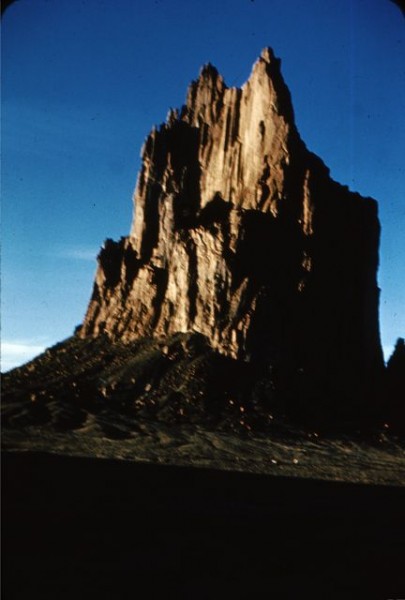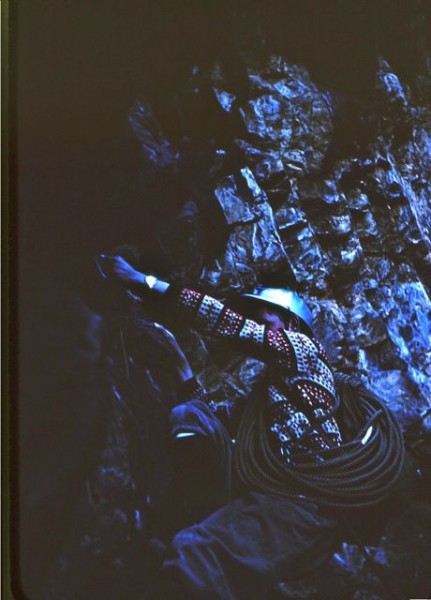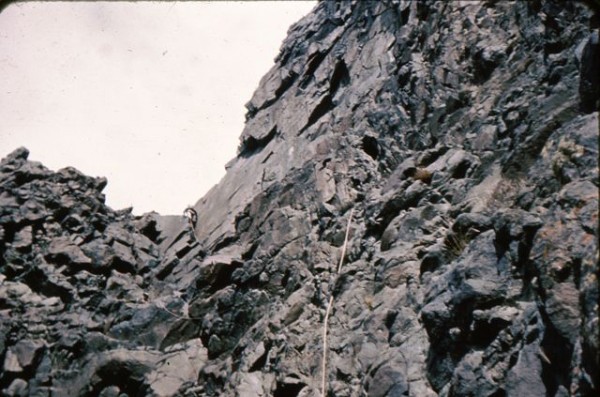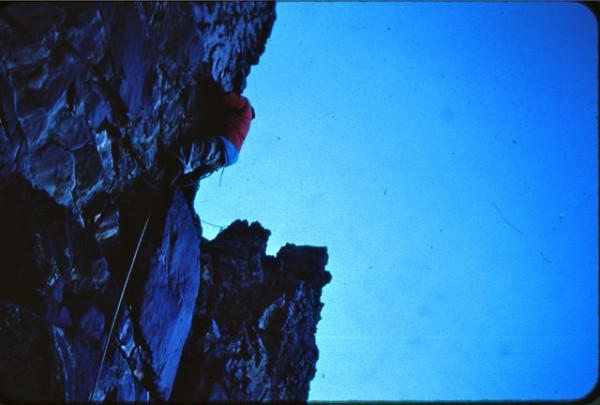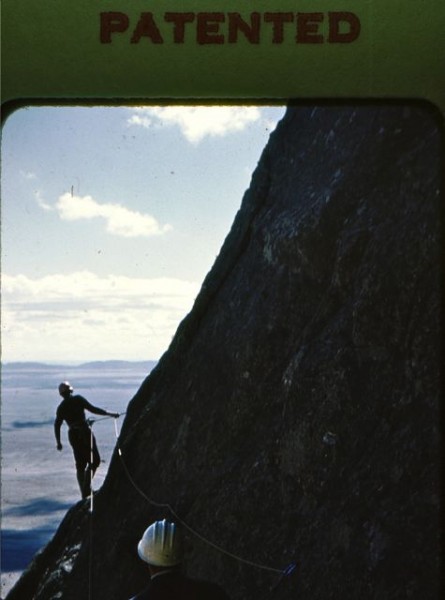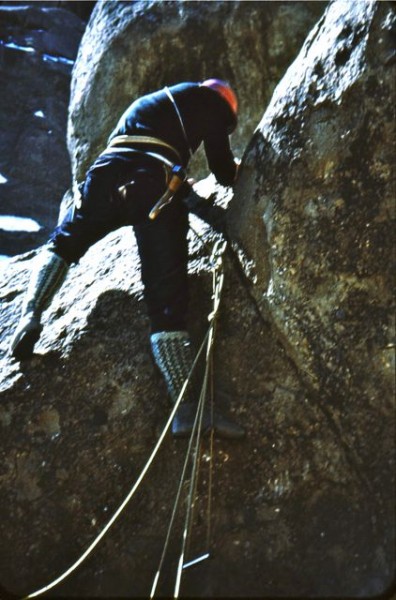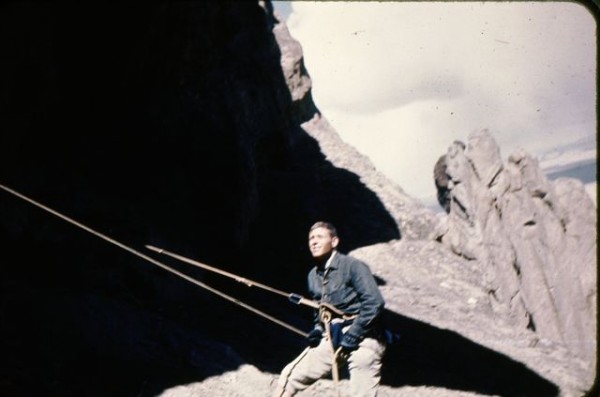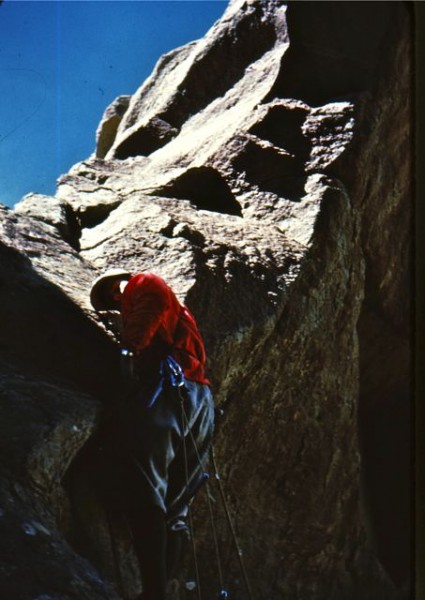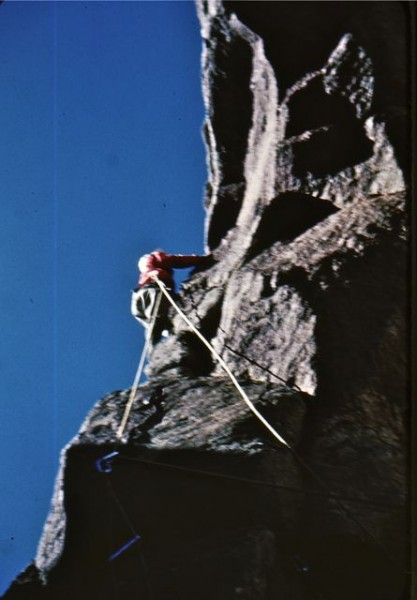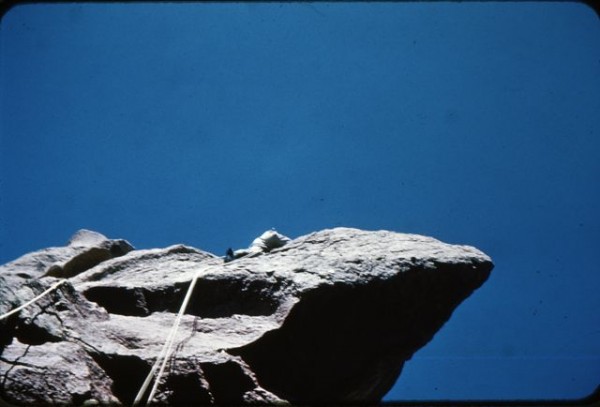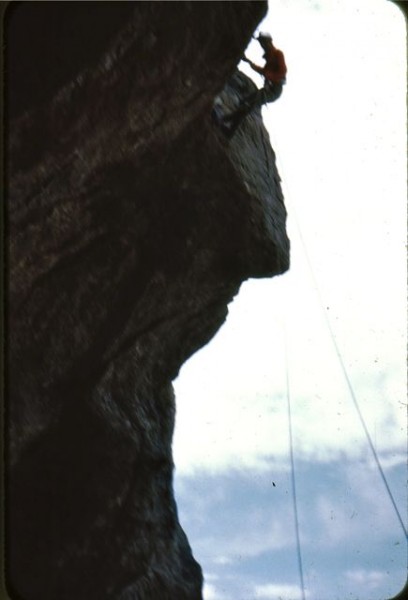Terry, Barclay, Laura, Ralph, Deb
Deb has been a great friend to me over the years. Her phone call to Alaska in 2012 was the final push to get me to move to Ridgway, so any day we can get into the mountains or onto a bicycle together is a pleasure.
Among the friends who gravitated to our table was my old friend, Dave Carman. Near the end, Deb twisted our arms to ski up McMillan peak area in the morning. Lance suggested that another friend, Pete Lev, join us. The alpine tour goes up SE from Red Mountain Pass above Ouray on an old county road, then branches left up to the top. Low down an icy snowcat track was our path that turned into a ski track. Lance broke off a little from the top, while four made our way higher; Peter spied a beautiful piste of virgin powder, so we headed for it. Dave and Deb veered left to catch a great line of untracked powder. At the top Peter and I had a cup of tea, took off our climbing skins and rested. Not a cloud. No wind. Perfect.
Pete, Dave, Ralph
Peter and I have known each other since 1965 when he was a guide for Exum and I was a ranger at Jenny Lake in Grand Teton National Park. Later, Pete became an owner of the guide service and I went on to Alaska. Over the years we have kept in touch, and as fate would have it, we both ended up in the Ridgway-Ouray area, the "La Brea Tar Pits" for old climbers, according to Bill Lisk.
The sun was beginning to make a tougher snow, so we headed down while the snow crystals still sparkled on top and our skis carved fluffy turns. It only took minutes to reach treeline where the angle steepened, and the snow was deeper between the pines.
The climbing world 40 years ago was a small one; I had known Dave since we were park rangers together in the Tetons in the mid-70's. Not only did we work and climb together, but he was on one of my early kayaking trips to the Owyhee River in 1975 and watched me flounder my way down some big rapids. So when he moved from Jackson Hole to Ridgway a few years ago, I had yet another ski/climbing/kayaking partner.
Lance had gone on ahead, so we hit the road and clattered our way down the mountain on the icy ruts. Not so bad, really, but way different from the incredible powder above. The slopes off McMillan were surely the most traveled and possibly the safest venue for backcountry skiing right now. The weather report was for strong winds and warm temperatures the next day, so we were pretty pleased that we had picked the last great day for a while.
Lance, Ralph, Dave, Peter, Deb
We ended up having a beer and appetizers until the sun set. A perfect day.







